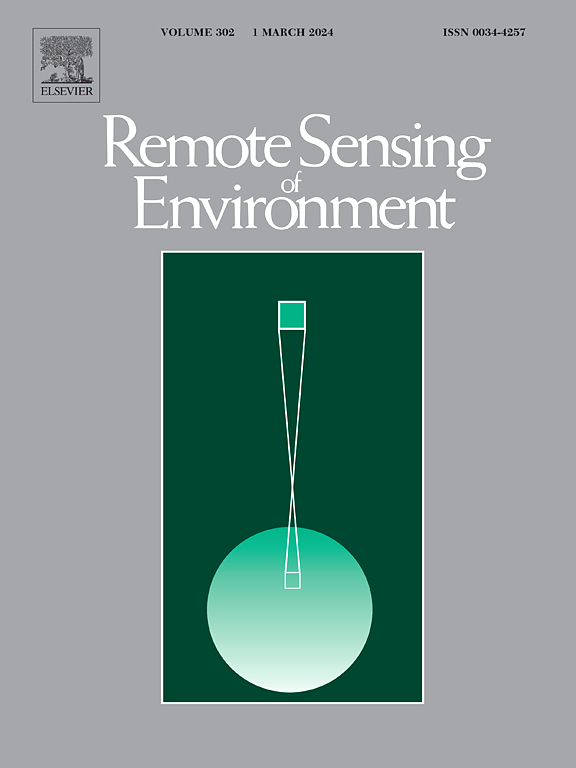Integrating GEDI, Sentinel-2, and Sentinel-1 imagery for tree crops mapping
IF 11.1
1区 地球科学
Q1 ENVIRONMENTAL SCIENCES
引用次数: 0
Abstract
Mapping tree crops is essential for resource management and supporting local livelihoods and ecosystem services. However, tree crops are often overlooked or misclassified in regional and global cropland maps. Employing multi-sensor imagery presents new opportunities for mapping tree crops by providing additional observations and distinct characteristics. Nevertheless, challenges regarding the scarcity of ground references and the lack of robust approaches to integrating multi-sensor imagery pose obstacles to the production of reliable tree crop maps. Herein, we evaluate the integration of the Global Ecosystem Dynamic Investigation (GEDI) LiDAR with Sentinel-2 and Sentinel-1 to facilitate tree crops mapping in the eastern Mediterranean region (including Syria, part of Turkey, and Jordan) and southern France. First, we systematically filtered the GEDI relative heights (RH) metrics and above-ground biomass density (AGBD) using ancillary data (e.g., cloud, topography, land cover) and applied spatial constraints to combine the high-quality GEDI shots with Sentinel-2 normalized difference vegetation index (NDVI) and Sentinel-1 VV and VH backscatter. Second, we used Time-Weighted Dynamic Time Warping (TW-DTW) and random forest (RF) models to test the classification performance using different combinations of input features at the GEDI footprint level. Finally, we used GEDI footprint level classification as training samples to train RF classifiers to generate wall-to-wall tree crops maps using a combined Sentinel-2 and Sentinel-1 imagery composite. We found that, at the GEDI footprint level, using GEDI variables only, we achieved an F1 score of 73–78 % for tree crops, approximately 4–10 % higher compared to that using Sentinel-2 and Sentinel-1 imagery for classification. However, by combining GEDI with Sentinel-2 and Sentinel-1 imagery, we achieved the highest accuracy (F1 score: 73–86 %) at the GEDI footprint level classification. The mapping accuracy of our wall-to-wall map varied across different agroclimatic zones with higher accuracy in dryer regions reaching up to 91 % and lowest at 69 %. Our finding demonstrates the value of using structural information from the GEDI data to map tree crops across different agroclimatic zones. Our study emphasizes the importance of tree crops in regional maps and offers insights to support the efforts to integrate data from multiple remote sensing platforms.
求助全文
约1分钟内获得全文
求助全文
来源期刊

Remote Sensing of Environment
环境科学-成像科学与照相技术
CiteScore
25.10
自引率
8.90%
发文量
455
审稿时长
53 days
期刊介绍:
Remote Sensing of Environment (RSE) serves the Earth observation community by disseminating results on the theory, science, applications, and technology that contribute to advancing the field of remote sensing. With a thoroughly interdisciplinary approach, RSE encompasses terrestrial, oceanic, and atmospheric sensing.
The journal emphasizes biophysical and quantitative approaches to remote sensing at local to global scales, covering a diverse range of applications and techniques.
RSE serves as a vital platform for the exchange of knowledge and advancements in the dynamic field of remote sensing.
 求助内容:
求助内容: 应助结果提醒方式:
应助结果提醒方式:


